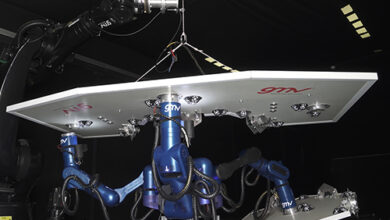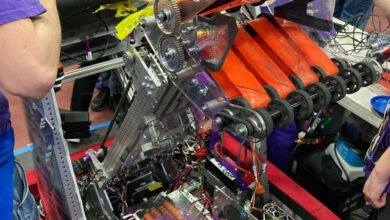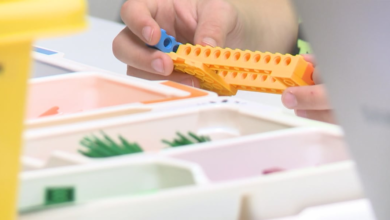Multi-Robot System Enhances EV Battery Disassembly

In a recent article published in the journal Robotics, researchers introduced an intelligent hybrid task planner specifically designed for multi-robot disassembly and showcased its application in dismantling electric vehicle (EV) lithium-ion battery packs. They aimed to allow multiple robots to collaborate seamlessly and execute battery disassembly tasks efficiently. Moreover, the research evaluated the performance of the novel system by employing various trajectory-planning algorithms and comparing them with existing methodologies.
Background
EVs are popular due to their environmental and economic benefits, but recycling and disposing of their lithium-ion batteries is crucial for the circular economy. While these batteries contain valuable components and materials that can be reused or repurposed, they also pose risks if not handled properly.
Robotic technology offers a solution to this, as it can efficiently disassemble batteries. However, most existing robotic systems rely on a single robot, potentially limiting efficiency and scalability. Therefore, there is a need for developing multi-robot systems that can effectively cooperate and coordinate in a shared workspace to execute battery removal tasks.
About the Research
In this paper, the authors proposed a novel task planner that can enable multiple robots to collaborate/communicate within a single workspace and efficiently execute battery disassembly tasks and without collisions. Their system employs logical and hierarchical approaches to identify object locations using data recorded by cameras attached to each robot’s end-effector, seamlessly coordinating pick-and-place operations. It can accommodate uncertainties and variations in object positions and disassembly sequences, ensuring adaptability across different battery models.
The planner encompasses several key steps: image acquisition, object segmentation, hierarchy selection, motion planning, and object grasping and placement. Object segmentation utilizes the You Only Look Once version 8 (YOLOv8) algorithm to detect and classify battery components and their locations.
Hierarchy selection prioritizes objects based on their placement sequence and distance from the robots. Motion planning leverages MoveIt software and the open motion planning library (OMPL) to generate collision-free trajectories. Finally, object grasping and placement control vacuum grippers and contact sensors to manipulate objects and place them accurately.
Moreover, the researchers implemented and tested the task planner’s performance in a simulated environment utilizing Gazebo, a three-dimensional (3D) robotic simulation tool. They employed a simplified version of the NISSAN e-NV200 battery pack, encompassing components like screws, battery modules, plates, leaf cells, and cables.
Additionally, they utilized two 6-degree-of-freedom universal robots (UR10), each outfitted with a vacuum gripper, a contact sensor, and a Kinect red, green-blue, and depth (RGB-D) camera. Furthermore, the performance of the developed planner was evaluated using three different trajectory planning algorithms: rapidly exploring random tree (RRT), RRT with two trees (RRTConnect), and optimal RRT (RRTStar). The study measured and compared the time taken to complete battery disassembly tasks using these algorithms.
Research Findings
The outcomes demonstrated the effectiveness of the task planner in successfully executing battery disassembly tasks using multiple robots, irrespective of the trajectory-planning algorithm employed. Completion times remained consistent across planners, with 541.89 s for RRTConnect, 543.06 s for RRT, and 547.27 s for RRTStar. Moreover, the study highlighted the planner’s adaptability to various battery models, configurations, and changing object locations and task orders.
The task planner effectively managed uncertainties and variations inherent in the disassembly process, such as object occlusions, rotations, and displacements. It dynamically updated the hierarchy and motion plans based on the environment’s current state, enabling logical and efficient task execution by the robots.
The presented system holds significant potential for applications in EV battery recycling and reuse, crucial for sustainability and the circular economy of this technology. It can streamline battery disassembly tasks, reducing human labor and environmental impact. Additionally, the system’s ability to handle different battery models and object variations makes it more flexible and scalable than existing robotic systems. Furthermore, its generalizability allows it to be applied to almost any disassembly task, as it does not rely on specific product or environmental information.
Conclusion
In summary, the authors demonstrated the feasibility and effectiveness of the novel task planner for multi-robot disassembly of EV battery packs. The system could effectively identify, manipulate, and sequence the placement of battery components.
The researchers acknowledged the limitations and challenges of this work and also suggested directions for future work. They recommended improving the object detection and segmentation model, incorporating more realistic physics and dynamics in the simulation environment, and testing the task planner on real robots and battery packs.
Additionally, they highlighted the need for further research on the design and optimization of battery pack structures and components, as well as on the development and integration of other robotic technologies, such as cutting, welding, and sorting, for the complete recycling of EV batteries.
Journal Reference
Erdogan, C.; Contreras, C.A.; Stolkin, R.; Rastegarpanah, A. Multi-Robot Task Planning for Efficient Battery Disassembly in Electric Vehicles. Robotics 2024, 13, 75. https://doi.org/10.3390/robotics13050075, https://www.mdpi.com/2218-6581/13/5/75.



